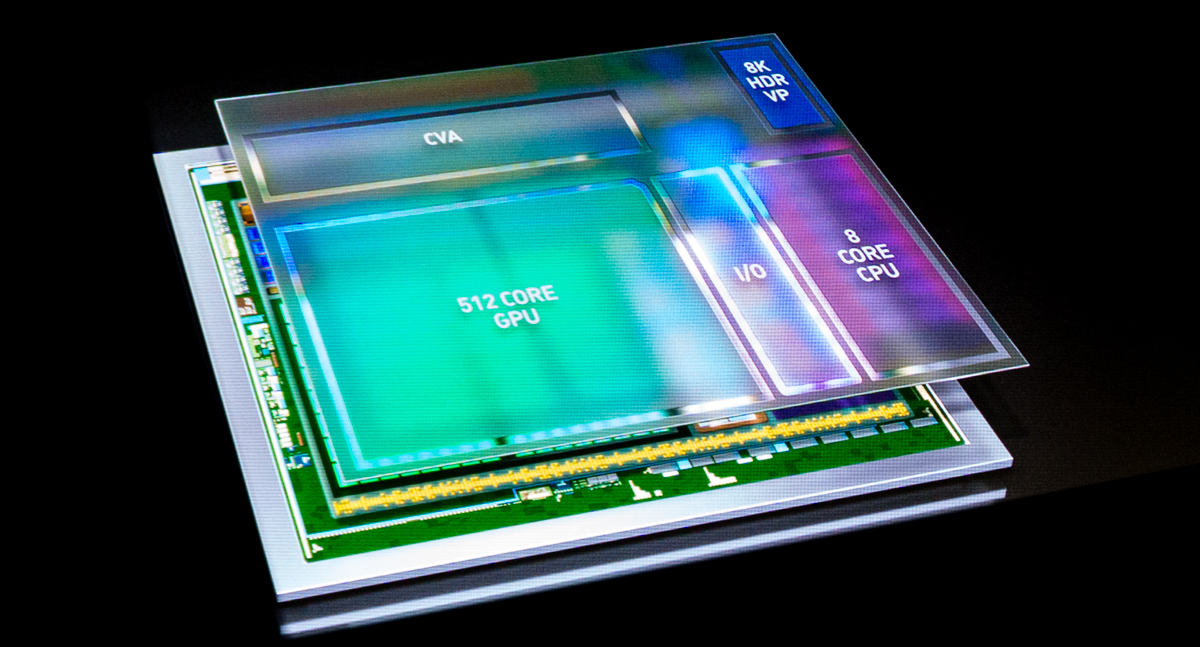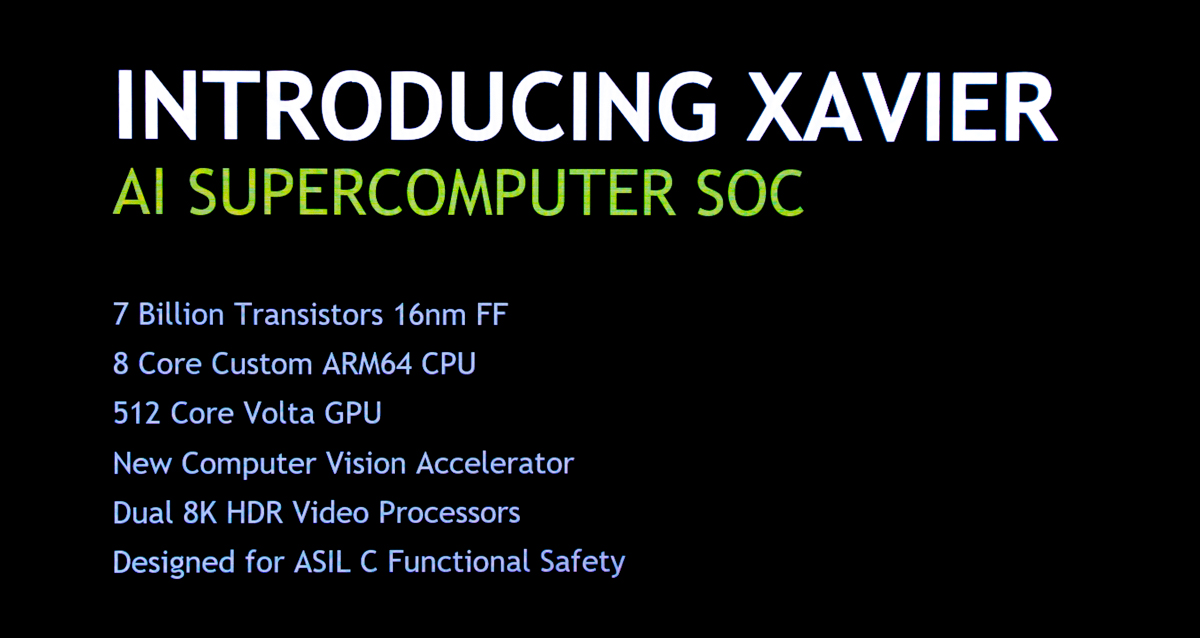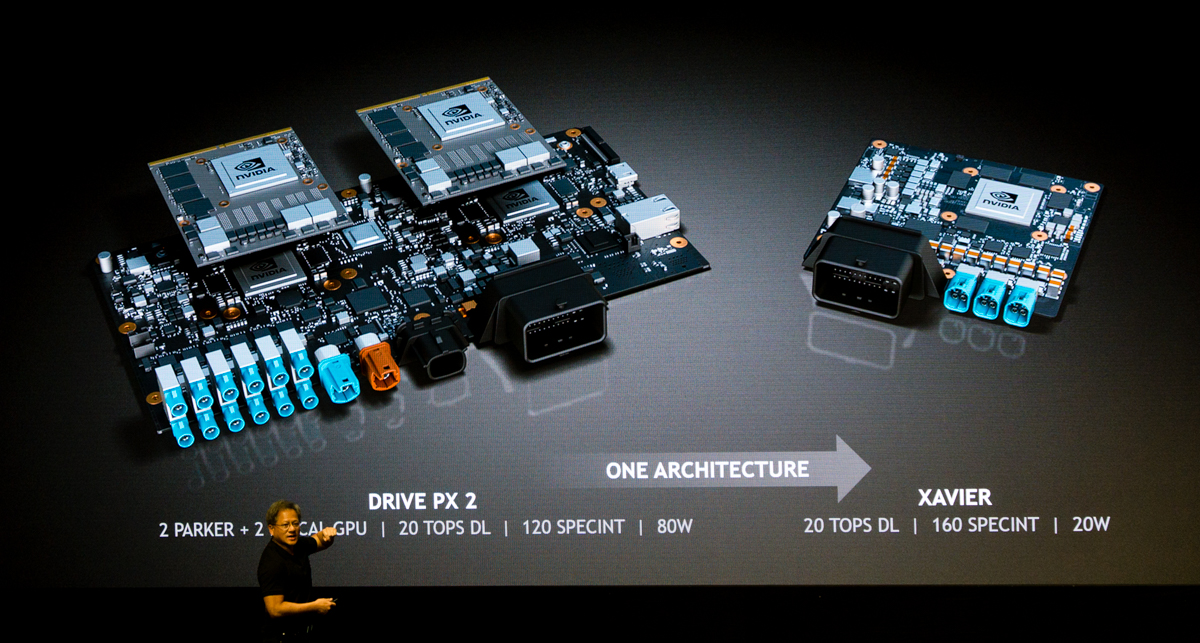Nvidia's 16nm Volta-Based 'Xavier' SoC Aimed At Deep Learning For Autonomous Vehicles
Nvidia announced a new SoC for use in autonomous vehicles, but in doing so also confirmed that Volta GPUs will be based on the 16nm FinFET manufacturing process.
Today at GTC Europe in Amsterdam, Nvidia announced a new SoC called Xavier that's designed to replace the existing Nvidia Drive PX2 system with a single device and a unified architecture.
Xavier isn’t a chip that’s coming anytime soon, so at this time details remain scarce. Nevertheless, Nvidia CEO Jen-Hsun did say that it will pack an 8-core ARM65 CPU and a 512-core Volta GPU.
Performance will lay around the same levels as Nvidia’s Drive PX2 system, but at a quarter of the power consumption, consuming merely 20W. The lower power figure is essential for automotive purposes, because car makers want to place the chips in the dash, where heat dissipation is more difficult.
Xavier will pack a grand total of 7 billion transistors and feature the 16nm FinFET manufacturing process, confirming that Nvidia will be sticking to 16nm for the upcoming GPU architecture.
Autonomous cars with Nvidia’s system work through deep learning, meaning that they have a neural net that the GPU uses to infer its environment. The actual creation of that neural net happens elsewhere. If a vehicle finds itself in a situation that it doesn’t know how to deal with, it will send the relevant data off to the data centers where it is used to create the next neural net that gets rolled out to vehicles.
The beauty of such a system is that whereas humans learn to drive based on their own experiences, autonomous vehicles will learn to drive based on the experience of all other autonomous vehicles. Nvidia’s CEO also said that Xavier is designed for ASIL C (Automotive Safety Integrity Level) functional safety, which is one step below the highest level, ASIL D.
Jen-Hsun said that Nvidia won’t begin sampling the chips until a year from now.
Get Tom's Hardware's best news and in-depth reviews, straight to your inbox.
Niels Broekhuijsen is a Contributing Writer for Tom's Hardware US. He reviews cases, water cooling and pc builds.
-
jasonelmore What are they gonna do about the missing camera inputs? they just went from supporting 12 camera ports to a couple multi channel portsReply



